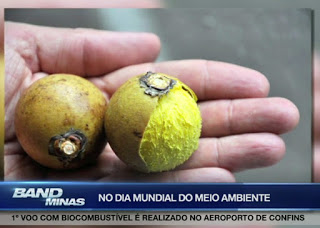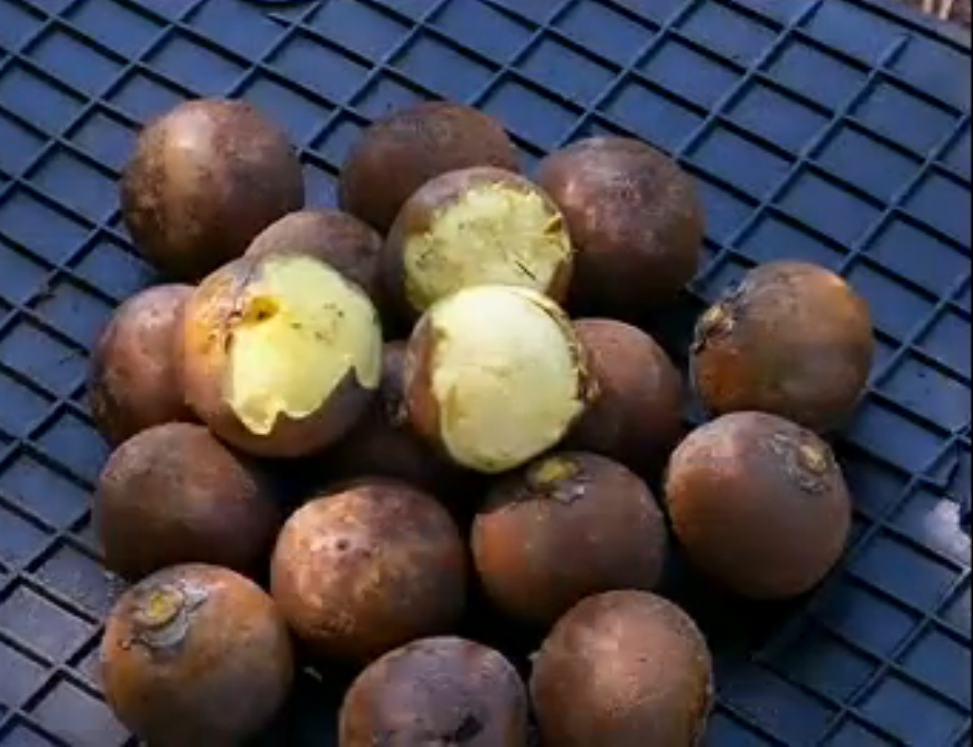Sugarcane more resistant and resistant to stresses with special leaf nutrition
segunda-feira, setembro 05, 2022
Long periods of drought, as well as exposure of sugarcane plantations to the coldest periods of the year or even the occurrence of frosts, cause direct impacts on sugarcane productivity. Agronomic experiments carried out between the 2020/21 and 2021/22 harvests indicate that the use of some micronutrients via leaf has helped in the greater resistance of sugarcane to climatic stress conditions such as intense water deficit, and resilience for recovery after periods of low temperatures. And the best, with productivity gains.
Several research studies indicate that abiotic tensions directly affect the photosynthesis rate of sugarcane, the growth of its roots, hindering the absorption and efficiency in the use of nutrients. "Studies conducted at Esalq/USP have shown that the deeper the sugarcane root system, the better its absorption. Thus, for plants that have roots between 0-10 cm, 42 days without rain are enough to kill 60% of the plants, while roots of 0-30cm, result in 100% of living plants", explains the consultant and specialized professor Fertilizers, Fertilization and Soil Fertility by Esalq /USP, Godofredo Vitti.
Some direct impacts of abiotic agents are:
- Closure of stomata: to reduce water loss through transpiration, plants under water stress close their stomata (structures located in the epidermis of the leaf responsible for gas exchange, releasing water in the form of steam and absorbing atmospheric CO2) earlier, impacting on the cooling of leaf surfaces and the acquisition of carbon in the form of CO2 so that it is biosynthesized.
- Enzymatic activity: temperatures above or below the optimal range considered for the crop may negatively affect the efficiency of some enzymes responsible for carbon fixation in plants, such as PEPcase and Rubisco.
- Excessive light radiation: The photosynthetic efficiency depends on solar radiation, however, if there is a lack of water, or low enzymatic efficiency, caused by stresses in general, excess light can cause an unbalance in the enzymatic capacity to receive the electrons generated in the photochemical phase of photosynthesis. In this way, oxygen itself will act as the final receptor of electrons, and will behave as an oxidizing agent capable of causing damage to plant cells.
"If we add the effects, we notice that sugarcane plantations under stress conditions have their development affected mainly due to the damage caused in the photosynthetic device, which drastically reduces the plant's efficiency in performing photosynthesis, in addition to cellular damage, especially lipid peroxidation," explains carlos Alexandre Crusciol, researcher and professor at the Paulista State University (UNESP), SP, Carlos Alexandre Crusciol
In general, plants developed survival mechanisms when they are subjected to various, biotic or abiotic stresses, which allowed them to tolerate or adapt to the environment. However, according to the professor at Unesp, there is a way to manage the plant to enhance the mitigation of the negative effects caused by stress.
"The application of nutrients responsible for the activation of antioxidant enzymes, amino acids, hormonal precursors and plant compounds, stimulate the plant to synthesize defense metabolites, whether these enzymatic or non-enzymatic, as well as hormones linked to stress-defense metabolism," he explains.
According to Thiago Moura, product specialist at Yara Brasil, deep preparations and subsurface conditioning are important practices at the time of sugarcane formation to help the root development of sugarcane. "In the plants, the application of localized vinasse or through aperse has also helped greatly to reduce the impacts of drought. Producers who do not have access to this by-product, for example, have been using technologies that contain, in a single product, a complex of nutrients associated with algae extracts and/or other components", explains Thiago Moura, product specialist at Yara Brasil.
Performance of nutrients in sugarcane
Among the nutrients that help mitigate the effects of drought or frost are: magnesium, phosphorus, zinc, iron, copper, manganese and boron. "In general, there is the contribution of one or more elements applied in plants under stress conditions, however, for there to be a response, it is important that all nutrients are balanced and that there are no physical and chemical impediments that limit the growth of roots in the soil. In this way, the set of actions can deliver adequate responses by the plant", highlights Crusciol.
Some micronutrients play an important role in combating oxidative stress, however, Zinc, according to Moura, plays a prominent role in being an important element for plant growth, acting directly in the activation of various enzymes of antioxidant metabolism, and for being the most deficient and responsive micronutrient in sugarcane.
Zn, besides being an activator of antioxidant enzymes, also acts in the stretching of the nodes (part of the stem responsible for the accumulation of sucrose), in apical dominance, because it is a precursor of the amino acid tryptophan, which in turn is a precursor of the hormone auxin, and in the activation of the enzyme Carbon icedan anhydrase, responsible for the hydration of CO2 and transport of carbon for its fixation.
Being a cationic micronutrient, Crusciol explains that Zn can interact with the negative charges of soil organic matter, as well as being in hydroxylform depending on the pH value of the soil, which can reduce its availability. "Thinking about it, the application of part of this nutrient, in more advanced phenological stages, via foliar, can be an alternative to provide Zn to plants and assist in mitigating abiotic stresses," crusciol states.
"While boron is important in membrane structuring and lignification of plant walls, carbohydrate metabolism and sugar transport [very important in this crop] among other processes linked to increased enzymatic antioxidants, zinc is responsible for stretching and cell growth, assisting in the functioning of photosystems and ensuring the maintenance of photosynthesis. They are the two elements that have the lowest levels in most soils and that, at the same time, give the greatest response in productivity", highlights the specialist yara.
Nutrient complex via leaf elevates TCH
After analysis, corrections, soil conditioning and application of macronutrients such as phosphorus, in the middle of harvest, the replacement of micronutrients via cutting of the soqueira and/or use plant stimulation technologies can and should be used. In the time of maximum vegetative development and early rainy season, leaf micronutrient complexes can bring more increments of TCH and ATR.
For Crusciol, in addition to the basic well-done, foliar applications have been a very efficient form of crop management. "Currently there is numerous studies that point to the increased efficiency of water use, in the photosynthetic, enzymatic and metabolic efficiency of the plant with the use of various products found in the market, with nutritional and physiological achievements", he adds.
Experiments carried out during the 2020/21 and 2021/22 harvests with the objective of raising the level of information on the recommendation of the use of special fertilizers that combine the use of nutrients and algae extracts to increase the resilience of plants to adverse climatic conditions was carried out by AgroQuatro-S, an agronomic applied experimentation company.
For this, three experiments were carried out with the application of a nutrient complex that gathers Boron and Zinc (YaraVita Biotrac) in sugarcane plantations in regions of water deficit and high temperatures, harmful occurrences to the crop. Two experiments were followed in a planting region in which two varieties of cultivation were evaluated, while a third was conducted in a sugar area of 2nd cut.
The results showed that plants that received leaf nutrition became more resilient to climatic stress conditions and obtained productivity gains of on average 6 t/ha in the sugarcane areas and 8 t/ha in the 2nd cut sugarcane area, compared to those that did not receive leaf nutrition. The studies also observed an increase in sugar concentration per ton of stem, with gains of 2 t/ha in general.
"In this experiment we also verified that the nutritional complex increased the sugar contents in the plant, reaching higher rates of apparent sucrose content in sugarcane (POL) and Total Recoverable Sugar (ATR). It was possible to certify that the adoption of leaf fertilizer containing algae extract brings increases in the production of stems and sugars, evidencing the high potential of leaf nutrition for sugarcane", explains Sérgio Gustavo Quassi de Castro, researcher at AgroQuatro-S Experimental and Applied Agronomic Consulting.
Also according to him, the results in the 2021/2022 harvest corroborate the previous ones. The gains were 7 to 8 tons per liter applied and 0.8 to 1 ton of pol per hectare.
"In the economic analysis, an application of 0.5 liters by leaf route, whether in pre- or post-dry, a gain of 5 to 6 TCH and 0.5 t per hectare was observed," the researcher added.
The concentration of sugar per ton of stem is a characteristic much sought after by mills since, for the sugarcane industry, the higher the sucrose contents, the better. "The results of this study can assist producers in recommending the use of foliar fertilizers and contribute not only to increased productivity and quality of production, but also to increase crop resistance to adverse environmental effects that both impair healthy plant growth and are increasingly frequent", told.
Another set of experiments conducted by AgroQuatro-S in 3rd cut sugarcane, carried out in the 2018/19 harvest, also showed data on increased productivity. At the time, the complex was used by foliar, in a single application, in the period of culture growth, between 150 and 180 days after regrowth.
The result showed that the productivity (TCH) of sugarcane increased by up to 19 t/ha with the application of 3.0 L/ha, which represented approximately 20% of TCH more when compared to plants that did not receive application of the product.
With the increase in sugarcane yield, a linear increase in sugar production was also observed, thus concluding that the application of 3.0 L/ha of this complex provided gains of around 27% in sugar production.
"The product brings a physiological resilience in the plant allowing it to remain more stable at the time of water stress.In our trials the pre-cold application when the frost is very severe, the complex does not show expressive results of protection, but in the return of conditions favorable to growth (spring), that is, post frost and post stress in the spring, it demonstrated a start that allowed, in part, to recover the performance of the plant", castro says.
Biological assets make all the difference
Moura points out that leaf application is complementary to the soil fertilization process, the main source of access of nutrients to the plant, and important for correcting any deficiencies and/or when there is low efficiency in land application due to unavailability conditions.
With this in mind, Yara developed Yara Vita Biotrac, which, in addition to providing Boron and Zinc, combines biological assets from algae extract. "These assets act on the physiological processes of the plant, increasing the efficiency of nutrient use, stimulating vegetative growth and can still mitigate the stresses caused to the plant. The plant can benefit by preparing for a moment of stress, metabolizing compounds that help decrease reactive oxygen species," moura adds, saying that the recommendation is application in the "pre-winter" and early rainy season (spring/summer) with a recommended dose of 1 L/ha.
According to the unesp researcher, biological actives stimulate plants to produce growth-inducing substances such as plant hormones, amino acids and proteins. "Because these biological assets are extracted from plants and/or algae adapted to extreme conditions, in their constitutions there are also compounds generated by the defense metabolism of these organisms (seaweed and plants), thus directly acting in the mitigation of abiotic stresses of cultivated plants that receive them" stresses.
For Vitti, biological actives are reality and when associated with micronutrients promote greater absorption and transport of nutrients, with beneficial effects on cell stretching. "In a practical language they are a basket of active molecules with effects on hormonal modulation, osmoprotection, signaling defenses, stress reducers and antioxidants," vitti concludes.




















0 comentários
Agradecemos seu comentário! Volte sempre :)